As progenitors of both gods and mortal existence, the Titans occupy a unique space in the Hellenic narrative. Born from the primordial union of Gaia (Earth) and Uranus (Sky), these formidable beings wielded dominion over realms that spanned from the vastness of the heavens to the depths of the underworld. Their stories, characterized by the gravity of cosmic struggles and divine conflicts, provide insight into the relationships that governed the cosmos in antiquity.
Cronus (Kronos)
Titan of time and the ages, often depicted as the leader of the Titans.
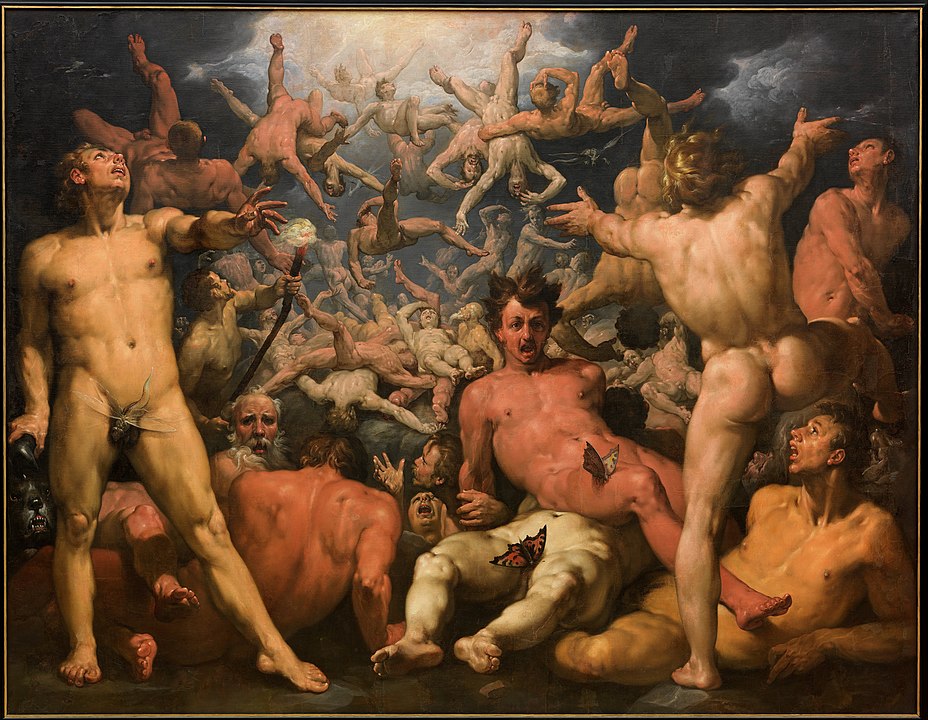
Kronos was a potent and renowned Titan in Greek mythology, acknowledged as both a creator and a destroyer. Born as the son of the Earth goddess Gaia and the sky god Uranus, he fathered six Olympian gods and goddesses: Zeus, Hera, Poseidon, Hades, Demeter, and Hestia. Playing a pivotal role in the Greek gods’ saga, Kronos overthrew his father and ushered in the Golden Age, only to be later defeated by his son Zeus.
As the youngest of the twelve Titans born to Gaia and Uranus, Kronos had siblings like Oceanus, Hyperion, Coeus, Iapetus, Crius, Mnemosyne, Phoebe, Theia, Themis, Tethys, and Rhea. Some of his siblings, despised by Uranus, were imprisoned in Tartarus, including the Cyclopes and the Hekatoncheires. Gaia, discontented with this, persuaded Kronos to rebel against his father. Armed with a sickle given to him by his mother, Kronos castrated Uranus as he sought union with Gaia. The blood and seed of Uranus gave rise to new beings, such as the Erinyes, the Giants, and the goddess Aphrodite.
Having dethroned Uranus, Kronos became the ruler of the world, marrying his sister Rhea. Initially, he governed as a benevolent and wise leader, initiating the Golden Age characterized by peace, harmony, and the absence of laws or suffering. Kronos was also revered as the god of harvest and time, equated with the Roman god Saturn.
Yet a prophecy haunted Kronos, foretelling his overthrow by one of his own children and mirroring his own actions against Uranus. Driven by fear, he devoured each child Rhea bore, unaware that she had deceived him by substituting a rock for Zeus. Rhea secretly gave birth to Zeus on the island of Crete, where he was nurtured by a goat named Amaltheia.
Upon reaching maturity, Zeus confronted Kronos, tricking him into regurgitating his siblings and the rock. Zeus also liberated the Cyclopes and the Hekatoncheires from Tartarus, forming an alliance with them and certain other Titans to wage war against Kronos and his loyalists. This conflict, known as the Titanomachy, endured for a decade until Zeus and his allies emerged victorious. Kronos and the defeated Titans were cast into Tartarus and imprisoned indefinitely.
However, Kronos did not remain in Tartarus forever. In some mythological versions, Zeus freed him after defeating the Giants and Typhon. Kronos then ruled over the Elysian Fields, the paradise for souls who led virtuous lives. In alternative versions, the Romans worshiped Kronos as Saturn, commemorating the Golden Age annually through the festival of Saturnalia.
Rhea
Titaness and mother of the gods, associated with fertility and motherhood.
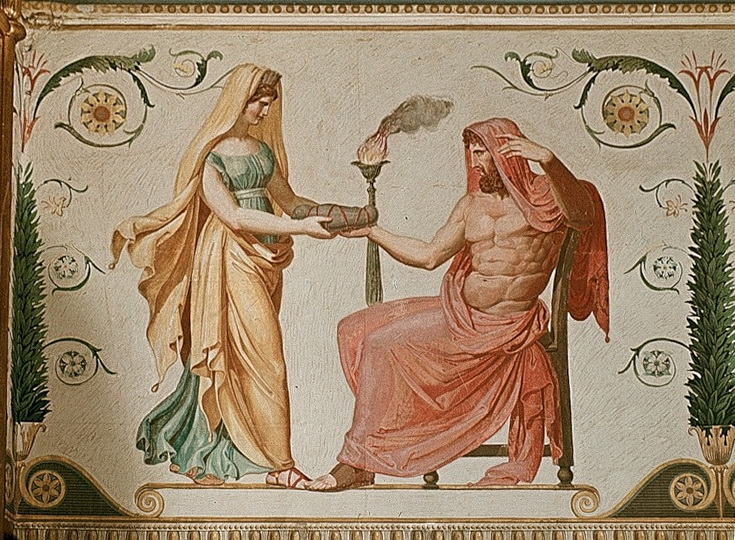
Rhea was one of the twelve Titans born to Gaia and Uranus. She was both the sister and wife of Kronos, the ruler of the Titans, and the mother of six Olympian gods and goddesses: Zeus, Hera, Poseidon, Hades, Demeter, and Hestia. Revered as the mother of the gods and the goddess of nature, fertility, and motherhood, Rhea was often depicted with symbols such as a tower crown, cymbals, a chariot, or a tambourine. Her sacred animal was the lion, her sacred object was the cornucopia, and her sacred tree was the silver fir. The Romans identified her with the goddess Ops.
By preventing her son Zeus from becoming the prey of his father Kronos, Rhea played a crucial role in Greek mythology.
Rhea did not fade into obscurity. Zeus respected and revered her as the mother of the gods. She was equated with the Great Goddess or Earth Mother, assuming various names and forms across different cultures and eras, such as Gaia, Cybele, Demeter, or Hera. Considered the embodiment of nature, fertility, and motherhood—bestowing and taking life—Rhea became linked with different aspects of herself or her daughter, including Amaltheia (Zeus’s nurse), Io (Zeus’s lover), and Adrasteia or Nemesis (the avenging goddess). At times, she was regarded as the ruler of the Isles of the Blessed or Elysium, where the Golden Age, created with Kronos, endured.
In summary, Rhea emerges as a significant and multifaceted figure in Greek mythology, embodying both Titan and goddess. Born of Earth and Sky, she was the wife and sister of Kronos, mother to six Olympians whom she protected from her husband’s wrath. Revered as the mother of the gods and the goddess of nature, fertility, and motherhood, Rhea was identified with other goddesses or different aspects of herself. She embodied both creation and destruction, ultimately becoming a symbol of paradise.
Oceanus
Titan of the ocean, often depicted as a great river encircling the world.
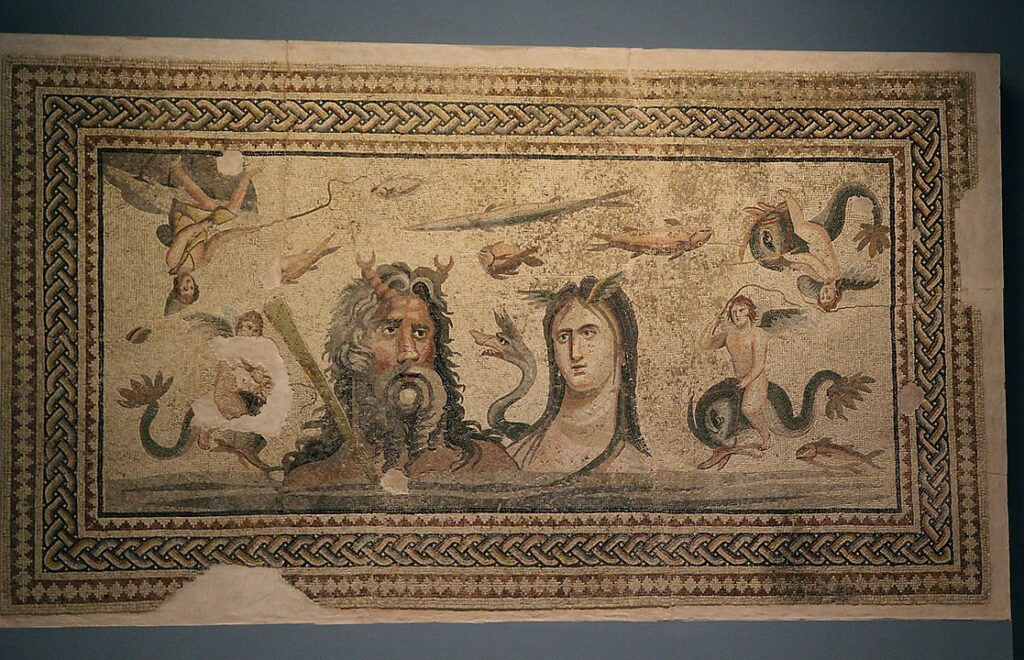
Oceanus was the son of the primordial gods of the sky and earth, Uranus and Gaia. He was one of the twelve Titan offspring, also known as the Elder Gods. Oceanus married his sister Tethys, the goddess of freshwater. Together, they had 3000 children known as the Oceanids, who were the gods and goddesses associated with rivers, seas, streams, and estuaries on Earth.
Oceanus served as the Titan god of the river Oceanus, believed to encircle the world and connect Earth with the sky and the underworld. He was the father of all rivers and the Oceanids, occasionally even considered the father of the gods and the origin of the world. Initially, Oceanus ruled over the Mediterranean and the Indian Ocean. When the Olympians took control, Poseidon became the ruler of the Mediterranean.
Due to the prolific nature of Oceanus and Tethys, they feared that their rapid reproduction would lead to floods if it continued unchecked. Consequently, they chose to divorce to address this issue. Unlike his Titan brethren, Oceanus did not participate in the Titanomachy, the war between the Olympians and Titans for control of the cosmos. This spared him from the punishment the others later received, which was imprisonment in Tartarus, the underworld.
In summary, Oceanus is a central figure in Greek mythology, representing both the creation of the world and the natural phenomena associated with rivers and seas.
Hyperion
Titan of light, associated with the sun and wisdom.

Hyperion was one of the twelve Titans, the offspring of Gaia (Earth) and Uranus (Sky) in Greek mythology. He was the god of heavenly light, and his name translates to “he that walks on high” or simply “the god above”. Hyperion married his sister Theia, the Titaness of the sun and sight, and together they had three children: Helios (Sun), Selene (Moon), and Eos (Dawn).
Hyperion, along with his son Helios, represented the sun, and the two were sometimes identified interchangeably. In Homer’s Odyssey, Hesiod’s Theogony, and the Homeric Hymn to Demeter, Hyperion is mentioned as Helios’ father. However, in the Iliad and other parts of the Odyssey, Helios is also referred to as “Helios Hyperion,” where “Hyperion” is used either as a paternal name or another epithet.
Hyperion was one of the Titans who fought against his father Uranus to elevate his brother Cronus to power. After Cronus castrated his father, he imprisoned the six younger siblings of the Titans, the Cyclopes and the Hecatoncheires, back into Tartarus. Up until the Olympians, who are the offspring of Cronus, overthrew Hyperion and the other Titans, they ruled the universe.
Following the Olympians’ victory, the Titans were banished to Tartarus, where Zeus tormented them with lightning bolts. However, Hyperion and his children were spared from this punishment as they did not actively participate in the war. They continued to fulfill their roles as celestial lights until they were later replaced by the Olympians.
Hyperion is one of the oldest deities in Greek mythology, symbolizing light and knowledge. He is the father of the three major celestial bodies that govern day, night, and twilight. However, he lacks his own myths or specific functions, serving primarily as a progenitor for the three heavenly deities.
Mnemosyne
Titaness of memory, mother of the Muses, and associated with the arts.
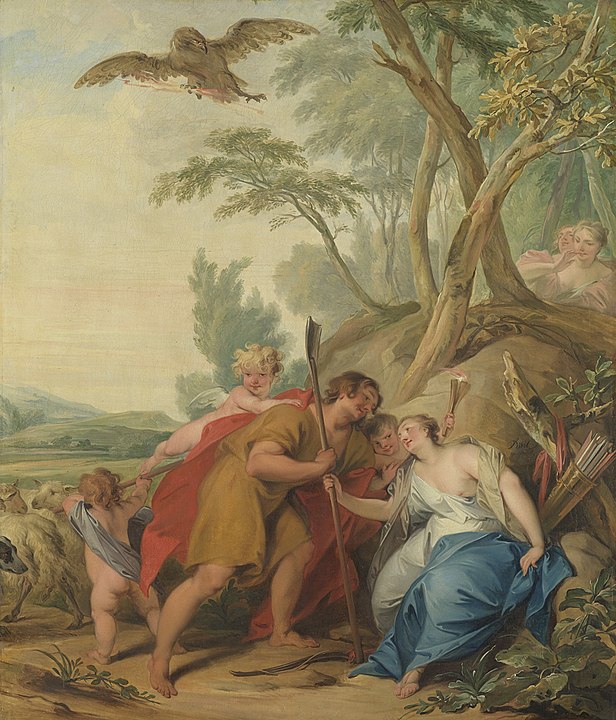
Mnemosyne is a captivating figure in Greek mythology, recognized as the goddess of memory and remembrance. The name Mnemosyne, derived from Ancient Greek, translates to “remembrance, memory.” She is a daughter of Uranus and Gaia, belonging to the Titans—divine offspring of the Earth goddess Gaia and the sky god Uranus.
Interestingly, Mnemosyne is not only a deity but also a river in the underworld. In contrast to the River Lethe, whose waters induce forgetfulness, the waters of the Mnemosyne river lead to remembrance.
Furthermore, Mnemosyne is acknowledged as the mother of the nine Muses, offspring she bore with her nephew Zeus. Legend has it that Zeus and Mnemosyne united for nine nights, giving rise to the nine Muses. These Muses are goddesses of the arts, representing various facets of culture and knowledge.
In summary, Mnemosyne holds a central role in Greek mythology. As the goddess of memory and remembrance, she significantly influences human culture and history. Her offspring, the Muses, serve as symbols for the diverse arts and sciences shaping human civilization. Through her association with the underworld’s river of memory, Mnemosyne also symbolizes the continuity of life and human experience beyond death.
Theia
Titaness associated with shining light and clear sight, often linked to the moon.
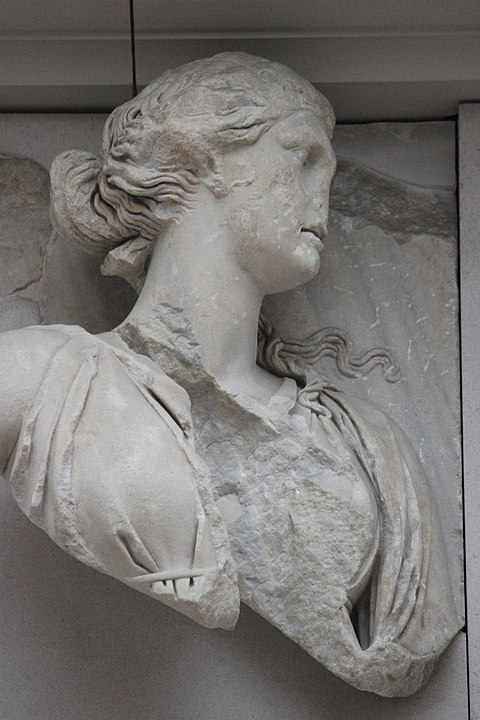
Theia was one of the twelve Titans, the offspring of the Earth goddess Gaia and the sky god Uranus in Greek mythology. She was the goddess of sight and brilliance, bestowing radiance and value upon gold, silver, and gemstones through her role. Her name simply means “goddess” or “divine,” but she was also called Euryphaessa, meaning “far-shining.”
Theia was the sister of other Titans, the Cyclopes, the Hecatoncheires, the Giants, the Meliae, the Erinyes, and the half-sister of Aphrodite (in some versions), Typhon, Python, Pontus, Thaumas, Phorcys, Nereus, Eurybia, and Ceto.
Her brother-husband was Hyperion, a Titan and the god of the sun, and together they were the parents of Helios (the sun), Selene (the moon), and Eos (the dawn). She appears to be the same as Aethra, the wife of Hyperion and mother of his children, in some accounts.
Theia played a minor role in mythology, mainly notable for the children she bore, although she appears in some texts and rare traditions. For instance, Pindar praises Theia in his fifth Isthmian Ode: “Mother of the Sun, Theia of many names, for your sake men honor gold as more powerful than anything else; and through the value you bestow on them, O queen, ships contending on the sea and yoked teams of horses in swift-whirling contests become marvels.”
Theia is also associated with a hypothetical ancient planet in the early solar system, which, according to the giant impact hypothesis, collided with the early Earth about 4.5 billion years ago, with some of the ejected debris forming the Moon. Such a collision, where the cores and mantles of the two planets merged, could explain why the Earth’s core is larger than expected for a body of its size. Collision simulations support the idea that the large low-shear velocity provinces in the lower mantle could be remnants of Theia. Theia is thought to have been roughly the size of Mars and possibly contributed a significant amount of Earth’s water. Her name aligns with her mythological role as the mother of the moon goddess Selene.
In summary, Theia was a significant Titaness in Greek mythology associated with light and sight. She was the mother of the celestial luminaries and potentially the catalyst for the Moon’s formation through a colossal collision with Earth.
Themis
Titaness of divine law and order, associated with justice.
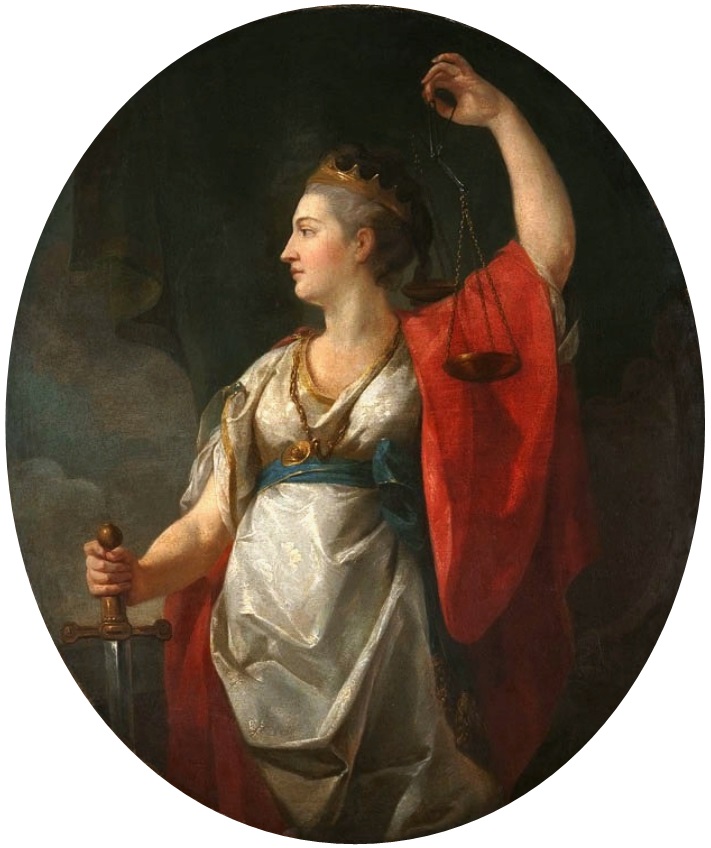
In Greek mythology, Themis is one of the Titans, pre-Olympian deities who were the children of Uranus (Sky) and Gaia (Earth). Themis is often associated with divine order, law, and custom. She represents the concepts of natural law and justice. As the personification of order and justice, Themis was considered the divine counselor, mediator, and embodiment of fairness.
She is typically portrayed as the daughter of Uranus and Gaia, making her a sibling to other Titans like Cronus and Rhea.
Themis was married to her brother, the Titan of time, Cronus. Together, they had several children, including the three Horae (seasons) and the three Moirai (fates), emphasizing her connection to natural cycles and destiny. In some traditions, Themis was associated with the Oracle at Delphi before it became associated with Apollo. She was believed to provide prophecies and guidance.
After the Titanomachy, the war between the Titans and the Olympian gods, Themis continued to play a role in the new order. She was often depicted attending the gatherings of the gods on Mount Olympus. Themis is often depicted holding scales, symbolizing the balance of justice, and a cornucopia, symbolizing abundance. Her representations emphasize the importance of maintaining order and balance in both natural and human affairs.
Crius (Krios)
Titan of constellations, celestial bodies, and heavenly constellations.
Crius is often associated with the concept of mastery or leadership, although his specific role and characteristics are not as extensively detailed as some other Titans. He is sometimes referred to as the Titan of Constellations or Starry Heaven, linking him to celestial realms.
Crius is the son of Uranus and Gaia, making him a sibling to Titans such as Cronus, Rhea, Oceanus, and Themis. He is typically portrayed as the husband of his sister Eurybia, with whom he had several children, including Astraeus (associated with astrology and the dusk), Pallas (associated with war), and Perses (associated with destruction).
Like other Titans, Crius took part in the titanomachy, the epic conflict between the Titans and the Olympian gods under Zeus’ leadership. The Titans were defeated, leading to the establishment of the Olympian order. After the Titanomachy, Crius and his fellow defeated Titans were cast into Tartarus, the deepest part of the Underworld, as a punishment for their rebellion against the Olympians.
Compared to some other Titans, Crius does not appear as frequently in mythology, and as a result, Cronus, Zeus, and Prometheus frequently take on a larger role and exhibit characteristics that are more prominent.
While Crius may not have a highly detailed mythological narrative, his association with celestial elements and his role as a Titan contribute to a broader understanding of Greek cosmogony and the transition from the rule of the Titans to that of the Olympian gods.
Coeus (Koios)
Titan of intelligence and farsight. While he’s not as extensively mentioned in myths as some other Titans, he is often associated with wisdom and the inquisitive mind.
Coeus is one of the Titans in Greek mythology, a generation of deities that preceded the Olympian gods. Coeus is the Titan of intelligence and is often referred to as the “Pillar of the North.” He is the son of Uranus (Sky) and Gaia (Earth).
Coeus is one of the twelve Titans, and his siblings include Cronus, Rhea, Oceanus, Hyperion, Theia, Themis, Mnemosyne, Phoebe, Tethys, and Crius. Coeus married his sister Phoebe, and together they had two notable children: Leto and Asteria.
Coeus doesn’t play as prominent a role in mythology as some other Titans. His name, which means “query” or “questioning,” suggests a connection to intellect and knowledge. While he doesn’t have many myths centered around him, his descendants, particularly Leto and Asteria, played significant roles.
Leto became the mother of Apollo and Artemis, major Olympian deities.
Asteria, another daughter of Coeus and Phoebe, transformed into the island of Delos to escape the advances of Zeus
Coeus, like other Titans, participated in the Titanomachy, the war between the Titans and the Olympian gods. In the end, Zeus-led Olympians defeated the Titans. After the Titanomachy, Coeus, along with many other Titans, was cast into Tartarus, a deep abyss in the underworld.
Coeus, while not as prominently featured in myths as some other Titans, represents an aspect of cosmic order and knowledge in Greek mythology. His lineage, particularly through Leto, connects him to the Olympian pantheon and the subsequent narratives of classical Greek mythology.
Tethys
Titaness of freshwater and the mother of the river gods.
Tethys, a Titaness in Greek mythology, holds a prominent role associated primarily with water and motherhood. Born as the daughter of Uranus (Sky) and Gaia (Earth), Tethys stands among the Titans, alongside siblings such as Cronus, Oceanus, and Themis.
She entered matrimony with her brother, Oceanus, jointly reigning over freshwater sources, including rivers, streams, and subterranean waters. Together, they are recognized as the progenitors of numerous river gods (Potamoi) and ocean nymphs (Oceanids).
Tethys embodies a nurturing and maternal archetype, symbolizing the life-sustaining properties inherent in water. Her significance extends to the rulership of freshwater sources, underscoring their vital role in the natural world.
The union of Tethys and Oceanus bore fruit in the form of vast offspring, including the 3,000 Oceanids and the Potamoi. The Oceanids, nymphs linked to diverse water bodies, coexisted with the Potamoi, river gods.
While Tethys does not occupy a central role in major Greek myths, her presence is recurrent in genealogies and lists of Titans.
Unlike certain Titans, Tethys and Oceanus refrained from direct involvement in the Titanomachy, the clash between Titans and Olympian gods. Consequently, they endured through the Olympian rule, albeit with diminished significance.
References to Tethys surface in various ancient Greek texts, notably Hesiod’s “Theogony,” spotlighting her as a Titaness associated with water and maternal attributes. Although Tethys may not enjoy the same widespread recognition as some Titans, her importance emanates from her connection to the vital forces of water and her role as a maternal figure within the divine genealogy of Greek mythology.
Phoebe
Titaness associated with the moon and intellect, grandmother of Apollo and Artemis.
In Greek mythology, Phoebe, a Titaness, is renowned for her connection with the moon and oracles. Daughter to Uranus (Sky) and Gaia (Earth), she stands among siblings such as Cronus, Iapetus, and Themis.
Phoebe is often acknowledged as the consort of her brother, Coeus, and together, they parented Leto (Latona) and Asteria. Notably, Leto became the mother of the twin gods Apollo and Artemis.
Active in the Titanomachy, the conflict between Titans and Olympian gods, Phoebe, like her peers, faced defeat and subsequent allocation to various roles or domains. While Phoebe is sometimes linked to the moon, her name, signifying “bright” or “pure,” distinguishes her from the more prominent moon goddess Selene.
Her connection to the Oracle at Delphi is noteworthy. Some traditions suggest that she passed on the Oracle to her grandson Apollo after he defeated the Python, a monstrous serpent associated with the Oracle.
References to Phoebe can be found in various ancient Greek texts, including Hesiod’s “Theogony” and Aeschylus’ “Prometheus Bound.” William Shakespeare also incorporated Phoebe’s name into one of the characters in his play “As You Like It.” Phoebe’s significance lies in her familial ties, association with the moon, and her role in the genealogy leading to key figures such as Apollo and Artemis.
Iapetus
Titan associated with mortality and father of Prometheus, Epimetheus, Atlas, and Menoetius.
Iapetus is a Titan in Greek mythology, known for his role as a primordial deity and his lineage. Iapetus is one of the Titans, the offspring of Uranus (Sky) and Gaia (Earth), making him a sibling to Cronus, Rhea, Themis, and others. He married his sister Clymene, and together they had several children, including Atlas, Prometheus, Epimetheus, and Menoetius.
Atlas is the most famous of Iapetus’ sons. He was condemned to hold up the sky on his shoulders as a punishment for his role in the Titanomachy, the war between the Titans and the Olympian gods. Prometheus, another son of Iapetus, is renowned for creating humanity and later stealing fire from the gods to benefit humans.
The name “Iapetus” is often associated with the meaning “the piercer” or “the one who wounds.” This etymology is linked to his connection with mortality and his role in the Titanomachy. Iapetus fought against the Olympian gods in the Titanomachy. After their defeat, he was cast into Tartarus along with other Titans who rebelled against the Olympians.
After the Titanomachy, Iapetus and his fellow Titans faced imprisonment in Tartarus. Zeus later released the Titans to take control of the Underworld. Iapetus is referenced in various ancient Greek texts, including Hesiod’s “Theogony” and Aeschylus’ “Prometheus Bound.” His name and legacy are woven into the rich tapestry of Greek mythology, symbolizing aspects of creation, rebellion, and divine punishment.





